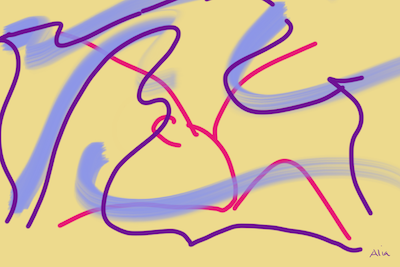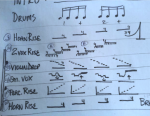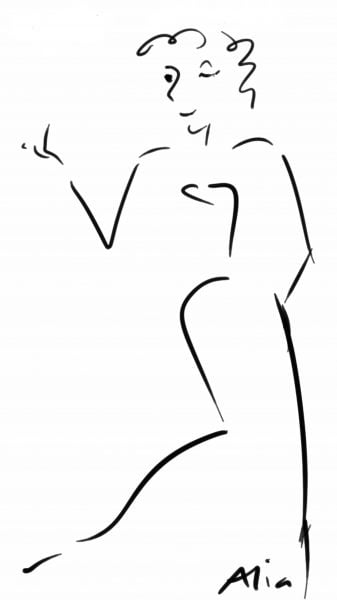One of the things I love about our dance is how adaptable and elastic it is. People throw the most amazingly odd things into it, and it just takes them in and makes them work (mostly, lol). It’s bizarre how free everyone feels doing this, too. Of course, some things work better than others, and some things work so well, they become core elements of the dance. For example, the veil.
When I was first involved in the dance, back in the days of the Five Part Routine, the veil was regarded as an American innovation in the dance. Though Muslim women often cover their heads (and faces, and bodies), they do not use the hijab for dancing. Is not an original component of the dance.
Badia Masabni introduced the veil in Egypt, according to Yasmin Henkesh, after seeing it at work in the Rudolph Valentino film, Son of the Sheik. Samia Gamal is also credited with introducing the veil, reportedly after her Russian trainer had her use a piece of floaty fabric to improve her arm carriage (and it sure will do that). Turkish dancers in NYC used the veil, primarily wrapping, unwrapping, and rewrapping as they danced and played finger cymbals. Yes, everyone played finger cymbals with their veil work back then.
But I suspect that the rich, sweeping, sumptuous use of the veil in the US came in from the burlesque and vaudeville circuit. There were Salomés with their dances of the seven veils, and fabric artists such as Loie Fuller in every show. The were Little Egypts in those shows, as well–and you can bet they all saw each other’s acts, and (like artists everywhere), adopted what they liked.

And I’m soooo glad they did!
I LOVE the veil. One of my main teachers and mentors in the dance is Elena Lentini, a true artist. And one of her signature arts is the veil. She pioneered the 4-yard veil and her work is exemplary. Here is some recent footage of her veil work (and here is some older)
So I came to this love through a LOT of learning. And this love affair has never ended.
The veil can be a dreamy, sensual accompanist; a good friend; a mischievous trickster and so many other things ; ). However, so much veil instruction is hinged to choreography. People learn tricks and counting and it all feels rather static and contrived. I mean, it can be very beautiful, but often it is paint by numbers, and you see all the lines.
What I like best is the veil’s fluidity as an improvisational prop. It becomes an extension of the arm, the body, the soul, as it swirls and sweeps, wraps and rolls, conceals and reveals. Here’s a tiny bit of veil work I posted earlier this year.
When I teach veil, it’s usually a one-off workshop, usually hooked to the Five Part Routine. We get to do basic technique (which is special and specific), practice a few wraps, and that’s about it. There is so much more! There is sooo much artistry and glory to the veil!
That’s why I am totally stoked to be offering
Visionary Veil–Beyond Tricks
Soulful Veil Improvisation for Oriental Dance
We get a whole five weeks to explore, practice, and integrate the veil in all its glorious magic, from Slow Movement to dazzling swirls.
Visionary Veil runs Tuesdays at 4pm EDT for five weeks, from Sept 14-Oct 12, 2021. See this in your time zone (add to calendar button in link). Each class is recorded (instructor view only). Each recording is available for the full duration of the course.
Come revel in the richness of one truly great western contribution to Oriental dance.
Registration is here. Visionary Veil starts this Tuesday, Sept 14.
I hope to see you there!
With so much love,
Alia






No comment yet, add your voice below!